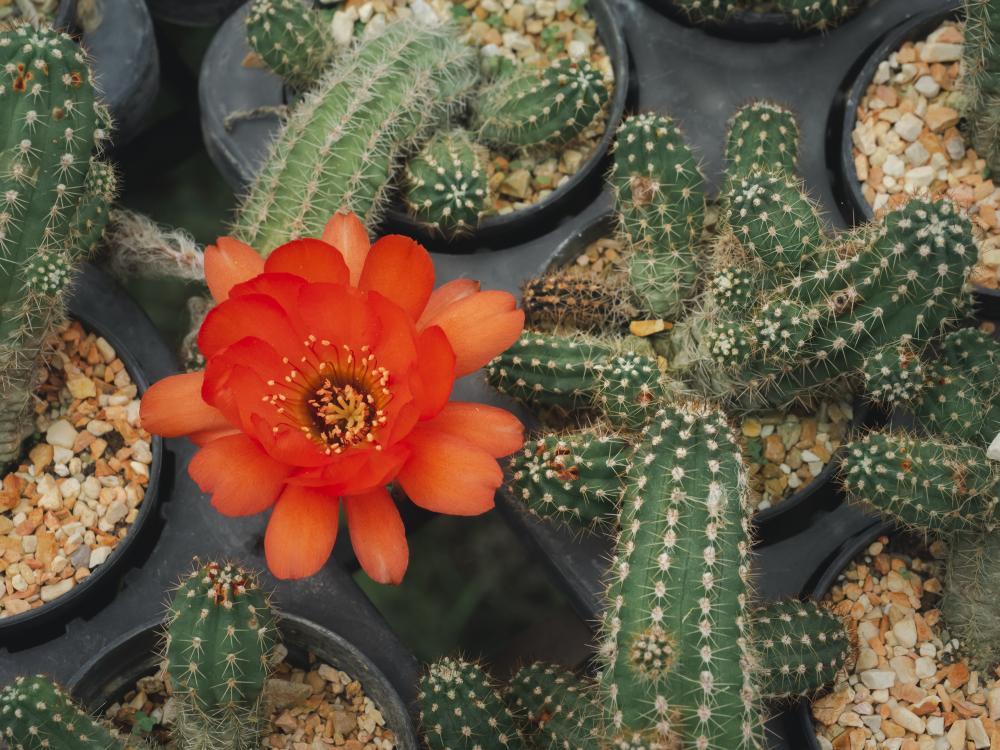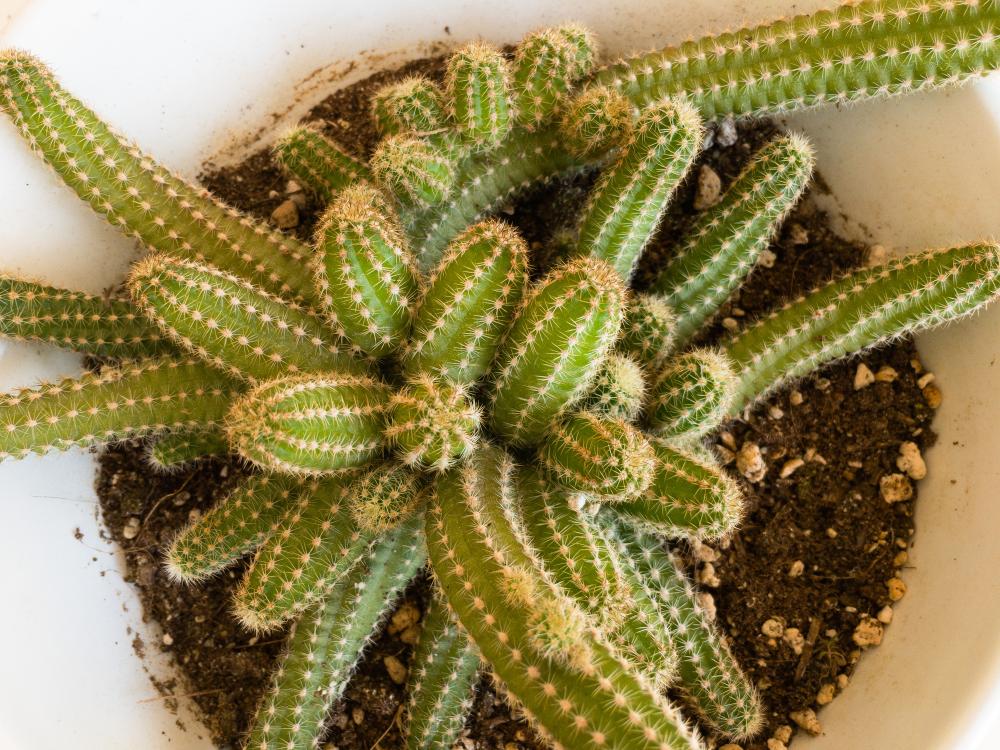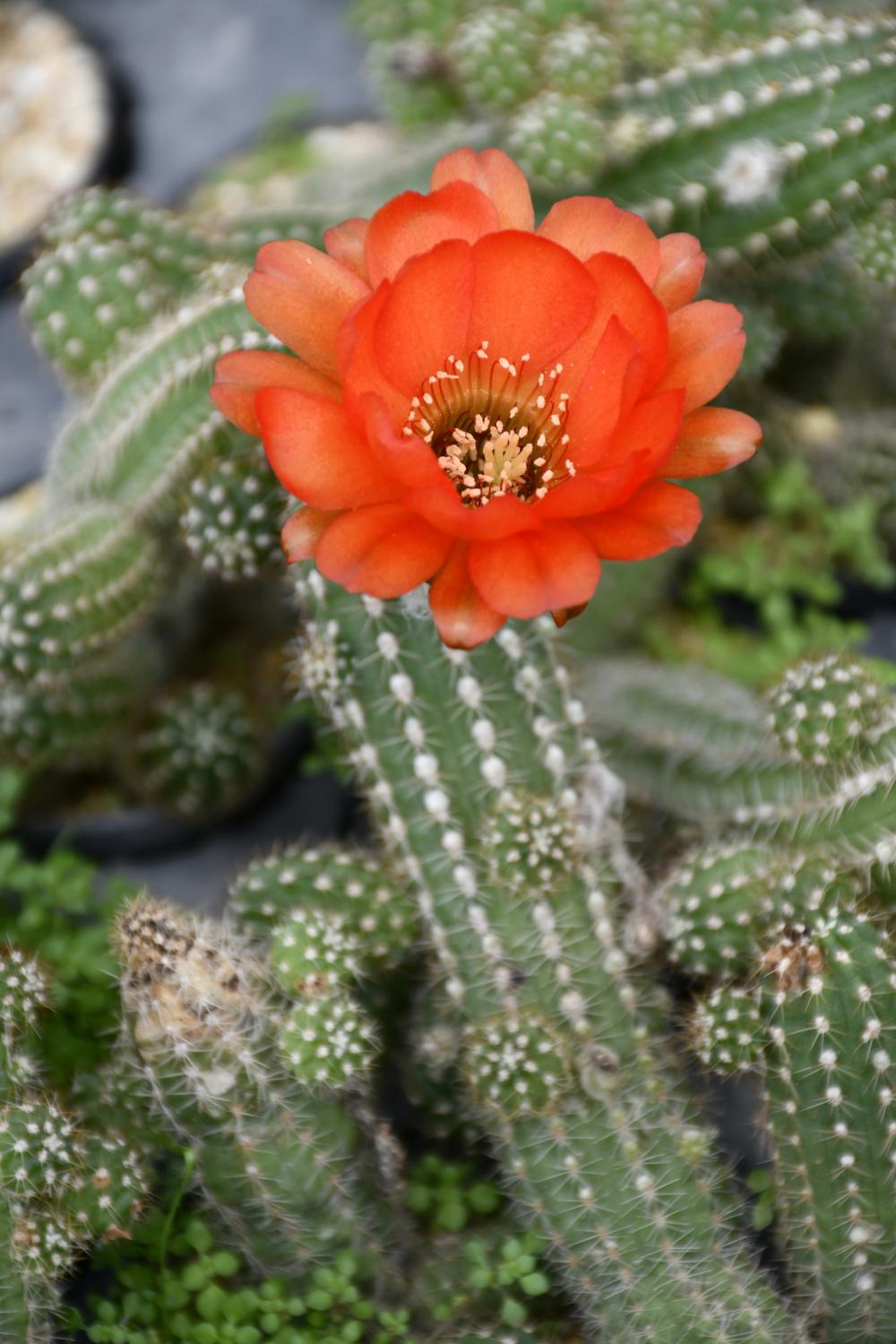How to Grow & Care for the Peanut Cactus
Posted by admin on
Your landscaping goals don’t need to be a demanding experience. You can grow an easy-to-maintain succulent such as the Peanut Cactus and be off the hook. With an enchanting floral display and rugged stems, this plant gives your outdoor space a desirable appearance without having to regularly keep up with tactful growing conditions.

In this guide, we’ll review some of the useful practices you can work with when growing and taking care of the peanut cactus.
Peanut Cactus at a Glance
The peanut cactus is a succulent that’s native to Argentina. Its scientific name is Echinopsis chamaecereus. When mature, the stems appear in clumps that resemble human fingers. They tend to look plumb and rigid. While new ones emerge, the old stems turn brown and woody. On the surface, the stems have flimsy ribs covered with tiny white spines.
Typically, the peanut cactus is a low-growing species that could reach anywhere between 5’ to 11’ inches tall. The other pleasing characteristic about this succulent is it produces flowers that are often 3’ inches long and about 2’ inches wide. Apart from cuttings, the peanut cactus produces fruits with seeds that you can also use for propagation.
Peanut Cactus Caring Tips

Flowering & Fragrance
During late spring or early summer, you can expect this succulent to bloom. Your peanut cactus will produce some charming red-orange flowers that could last the entire blooming season. They are funnel-shaped and with hairy floral tubes. Even though this plant isn’t frost-tolerant, it will need a cooler environment during the winter season, to prepare the buds for blooming. Once the flowers begin to wither, you can move the growing medium outdoors or place it near a sunny window.
Light & Temperature
Before going in-depth with the light requirements, it’s best to note that this succulent prefers to grow in USDA hardiness zones 10 to 12. If you’re living in North America or Europe, you can overwinter it indoors when the temperatures outside are persistently freezing. It’s commonly grown in regions such as Nevada, Arizona, California, and Florida.
Same as most other cacti plants, the Peanut cactus develop optimally in a bright and sunny location. If you grow it in an area with excess shade, it will begin to experience leggy growth. You, however, need to filter any intense heat from the sun so the foliage doesn’t get scorched. When growing it indoors, aim for the sunniest location.
A west or south-facing window is capable of providing your peanut cactus with the right amount of light each day. During the active growing period when the hormones are no longer dormant, typical room temperatures would be suitable for this succulent plant. To encourage blooming, expose it to a cooler climate that mimics its natural environment when it’s winter. The ideal temperature when overwintering your peanut cactus indoors should be anywhere between 32 to 45 degrees Fahrenheit.
Humidity
The peanut cactus does well under average humidity levels. Excess humidity causes the succulent to breed mold. You also risk attracting a stack of hard-to-treat fungal infections. Avoid placing the growing medium in an area such as the bathroom where humidity is high. Apart from tweaking the humidity levels, make sure to provide this succulent with enough air circulation especially during the growing season.
Soil & Transplanting
Your peanut cactus will need to grow in potting soil with a sizeable chunk of it composed of sand. Sandy soil helps a lot with drainage. If the roots end up clogged in moisture for a long period, they’ll begin to rot. Perlite is also a perfect amendment that significantly helps the soil become permeable.
Besides standard soil, you can use a commercial mix made for cacti plants. Once the blooming season is over, this would be a suitable time to transplant your peanut cactus. Repotting it once every three years is ideal. Make sure to carry out this errand with great care because the roots are feeble and can break or incur injuries. Transplanting gives the roots enough room for air circulation.
Watering & Feeding
Like other succulents, the peanut cactus stores water to stay alive during a dry period. You, therefore, want to give it modest watering intervals. This type is accustomed to living without consistent watering patterns. It’s best to use the soak and dry method when watering your peanut cactus. All you need is to keep the soil moist once it feels entirely dry.
Stick your finger to check whether the soil has completely dried up before watering your succulent once again. You also want to avoid overhead watering at all costs. If your peanut is growing in a warm and windy location, there are chances the moisture will evaporate quite fast. Water needs to flow downwards, so you need to directly aim for the soil.
And the best time to water your succulent is anytime between dusk to dawn when the temperatures are a bit lower than the typical readings. While succulents have an adaptation that assists in storing water, the effects of underwatering can be unforgiving sometimes. The cells will begin to appear flaccid, making the stems lose their turgidity and droop over.
You can make the best use of the Miracle-Gro succulent plant food to feed your peanut cactus. It carries the right nutrient composition that promotes blooming and newer growth. Overall, this succulent isn’t a heavy feeder, so you won’t need to prepare a potent organic organizer. Make sure to use a fertilizer with low strength and with a balanced nutrient composition.
How to Propagate the Peanut Cactus

Propagating your peanut cactus follows the same route most other cacti plants. You can reproduce this succulent using stem cuttings. Source healthy-looking cuttings from the mother plant during the spring season since the growth hormones aren’t dormant anymore around this period.
You can use a commercial cactus mix to grow the cuttings. It tends to provide optimal conditions for sprouting. Each cutting needs to be grown inside its own container. Place the growing medium near some shade, but in a location that gets enough bright light. Before planting the cuttings, you’ll need to give the wounds extra time to allow them to heal and form a callous. Sprouting might take between 2 to 3 weeks.
Common Pests & Diseases
While the peanut cactus isn’t prone to any serious pests, there are some occasions where you might need to deal with common pests like mealybugs, aphids, or scale insects. Spider mites also often like to attack the peanut cactus. You can use water to wash the mites or spray neem oil on the affected areas. Maintaining suitable humidity levels at all times is an effective way to discourage pests from infesting your Peanut cactus.
Low humidity and excess moisture are two other issues that could lead to black stem rot. If the rot is intense, it’s best to get rid of the entire parent plant and salvage a few stem cuttings that you would use for propagation. Another sign that shows your peanut cactus is getting low humidity is when the buds begin to fall off during the blooming season.
The post How to Grow & Care for the Peanut Cactus appeared first on DIYs.com.
